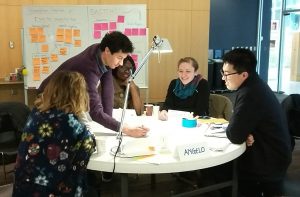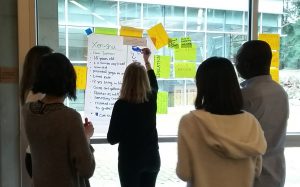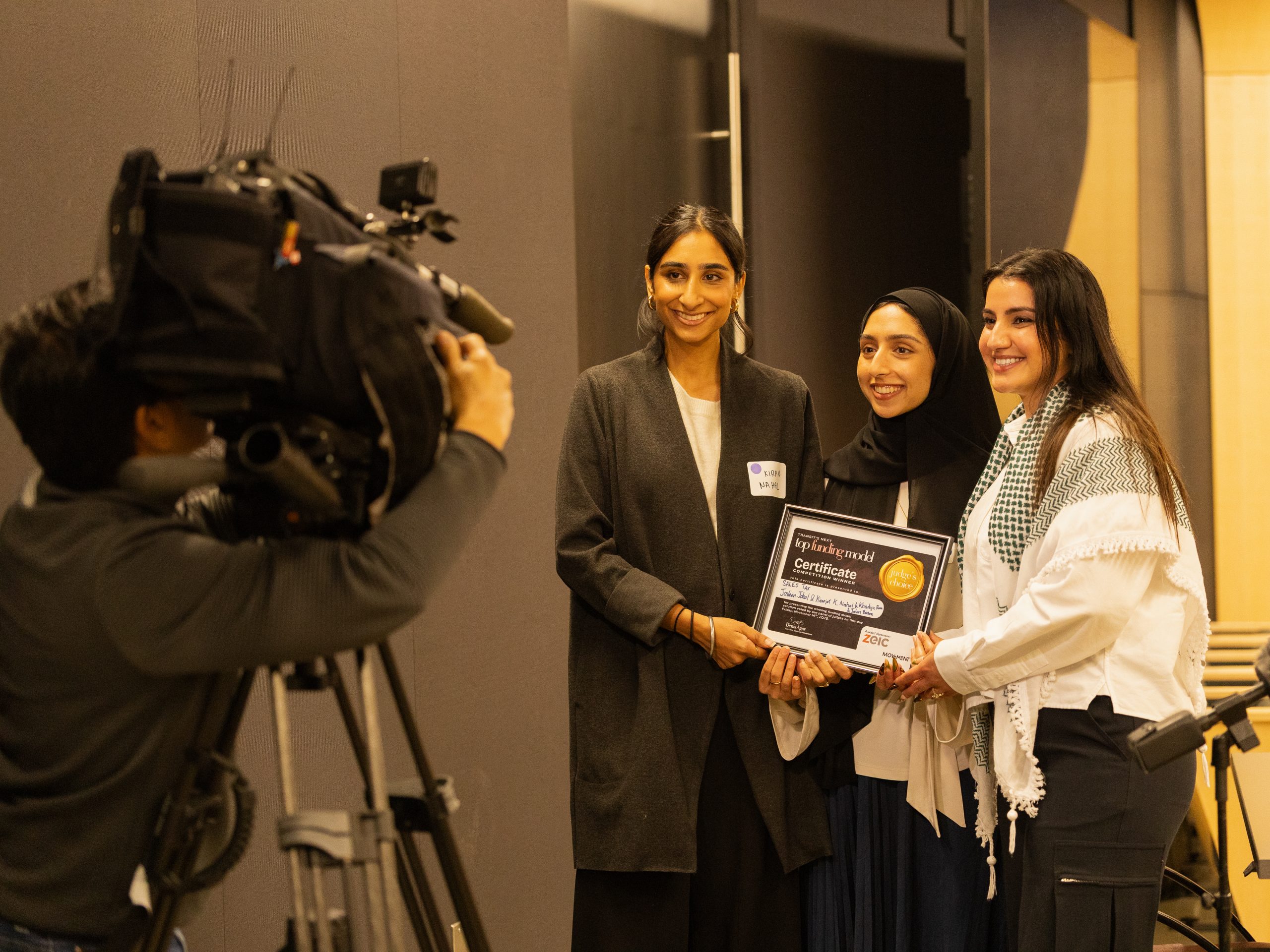The Master of Public Policy and Global Affairs program is excited to introduce the Strategic Design Workshop, a novel and complementary approach offered annually as part of the MPPGA curriculum which provides our students hands-on opportunities to develop new insights and policy ideas that they can develop during their studies, as well as in the workforce as policy professionals.
“Strategic design is about reconsidering the way we look at issues: it can enable new insights, it can reframe a problem, it can bring clarity and it can enable individual talents to shine.” – MPPGA Student
“Working in a team to co-create builds creativity, gives more power to solve an issue, and inspires innovative ideas.” – MPPGA Student
What is Strategic Design?
Strategic Design is an integrative method that couples user research and participatory design through creative and critical thinking techniques along with data analysis. It features highly engaged collaborative and team work experiences to co-create, test and launch solutions in order to tackle big picture or systemic challenges.
“Creativity thrives when ideas and assumptions are put out without mental hindrance of any kind, and policy making benefits from this.” – MPPGA Student
How did the Strategic Design Workshop originate?
The workshop was delivered in the 2017 Winter Session – Term 2 by MPPGA Director and Professor Moura Quayle and ISGP PhD student Marcelo Bravo as a part of the UBC Policy Studio’s academic outreach and research. Based at the Liu Institute for Global Issues, the UBC Policy Studio is a university-wide endeavor built on the strategic design method, incorporating expertise from across the campus while also serving the Master of Public Policy and Global Affairs Program along with other programs at the University of British Columbia. The Policy Studio has a local, international, and global orientation and is solution-oriented, emphasizing policy design, development, and implementation.
Additionally, the Policy Studio has a strategic focus on interdisciplinary and multidisciplinary research including policy design research, policy learning, intersectoral partnerships to complex problems, and applied innovation. These while incorporating emerging methods of academic inquiry and engaged participation.
“Problem diagnosis remains a crucial problem today. We tend to jump preemptively into tactics and problem solving. SDM can help rotate issues to provide multiple angles and vantage points.” – MPPGA Student
“Strategic design underscores the various ways that community resilience can be created and fostered!” – MPPGA Student
What are the benefits of the Strategic Design Workshop?
The Strategic Design Workshop is seen as an added valuable benefit by the MPPGA students. Blending creative and critical thinking, the workshop includes techniques and activities allowing for a hands-on experience that can be used to analyze and re-analyze policy opportunities and issues, complementing the classical approach to policy analysis frameworks conducted in classroom studies.
As there are different approaches to addressing policy issues, the Strategic Design Workshop recognizes this challenge and addresses it by implementing a more comprehensive practice of diverse methods. Policymaking is not a linear process and involves different steps of iteration that resemble how policymaking is in the real world, implementing a blend of critical and creative thinking while maintaining a focus on a more citizen-oriented approach to policy. The recognition of “nudging” is another key component: allowing for the detection of important elements of a community where policies can ‘nudge’ certain change along.
“Strategic design is about how to converge different ideas to one problem, designing a solution process, analyzing multicultural values.” – MPPGA Student
Strategic Design in Action: Ottawa
In 2016, a group of UBC MPPGA students had the opportunity to travel to Ottawa, directly experiencing strategic design by tackling issues surrounding energy conservation at the household level, working environments, and public spaces. Analyzing real-life situations of day to day citizens, the students witnessed how citizens deployed and understood routines, interests, challenges, and fears, garnering a comprehensive approach to understanding the effectiveness of a policy. According to the students, the Strategic Design Method prompted them to understand policy opportunities where there could be space for “smart interventions” to be more effective.
Other examples of Strategic Design in action:
How Iceland Got Teens to Say No to Drugs
Just a Little Nudge: The Science of Energy Consumption, Innovation, and Behaviour Change




